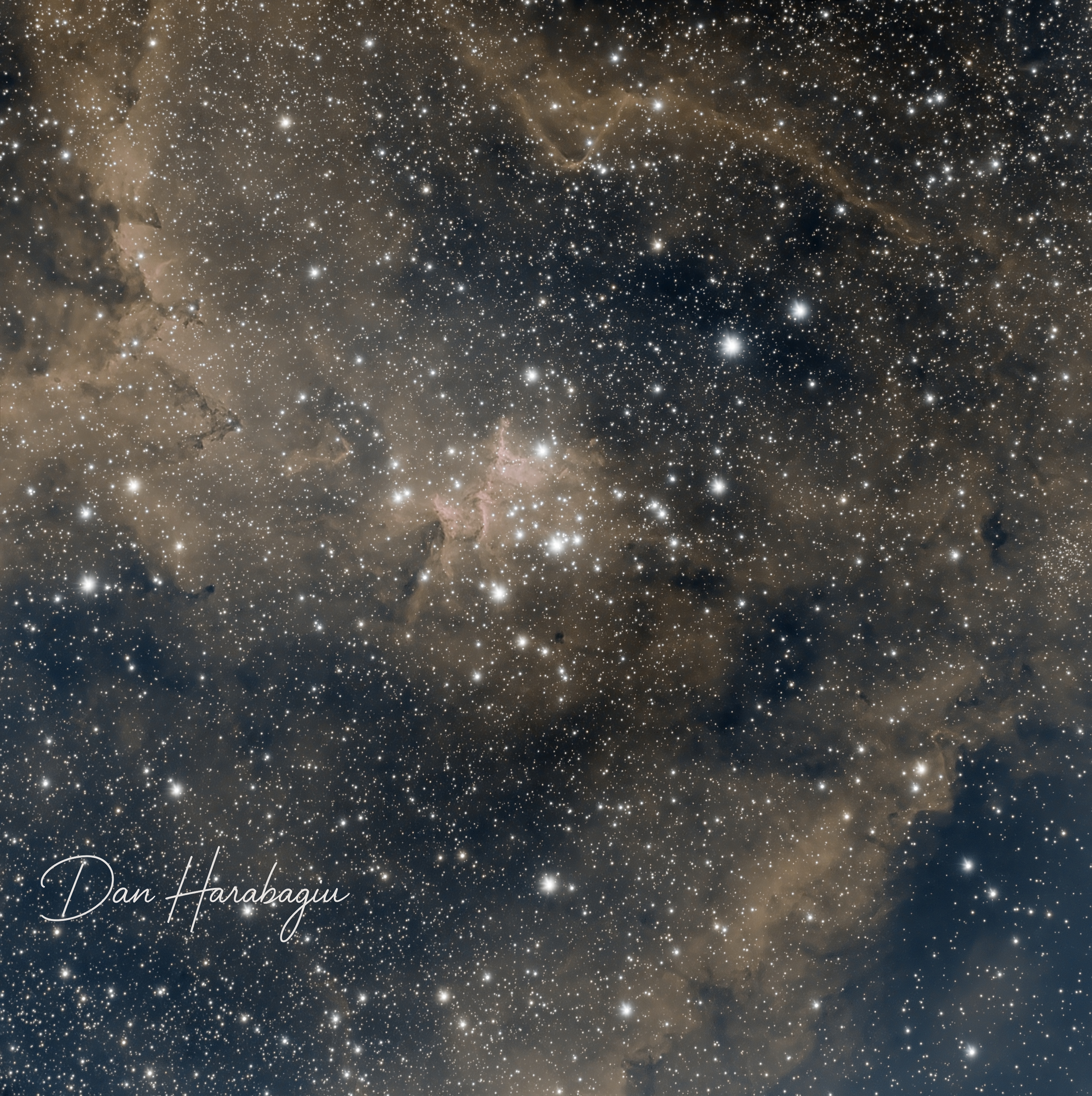 A close-up of the central region of IC 1805, also known as the Heart Nebula.
A close-up of the central region of IC 1805, also known as the Heart Nebula.
💗 Overview
- Name: Heart Nebula
- Catalog: IC 1805 (Sharpless 2-190)
- Constellation: Cassiopeia
- Distance from Earth: ~7,500 light-years
- Apparent Size: ~60 arcminutes (1° across)
- Type: Emission Nebula (H II region)
✨ What We See
This image captures the central part of the Heart Nebula, rich in glowing hydrogen gas and embedded star clusters. The structure is carved by stellar winds and radiation from:
- Melotte 15 – the bright star cluster at the core of the nebula
- O-type and B-type stars – massive, young stars that energize the surrounding gas
- Sculpted dust pillars and filaments that trace the motion of stellar winds and magnetic fields
🔭 Scientific Significance
- The Heart Nebula is an active star-forming region and a classic example of an H II region
- The interplay between radiation pressure and interstellar dust creates the textured, turbulent structures visible in long exposures
- The nebula is part of a larger complex that includes its neighbor, IC 1848 (Soul Nebula)
📷 Equipment Used
- Telescope: TS-Optics 80PHQ (544mm f/6.8 Quintuplet APO)
- Camera: SVBONY SV605MC (IMX533 Mono)
- Mount: Sky-Watcher EQ5 Pro
- Guiding: Off-Axis Guider with veLOX 178 C
- Filters: LRGB / Hα
- Software: NINA, PHD2, PixInsight, Photoshop
- Exposure Time: Long integration for high contrast and faint detail capture
📝 Final Thoughts
IC 1805 is a stunning target for astrophotographers due to its rich combination of emission, star formation, and cosmic dust. The central cluster, Melotte 15, provides a radiant core, while wisps of gas and dust form intricate structures around it.
In the heart of Cassiopeia lies a stellar nursery sculpted by time, gravity, and light.
Clear skies!